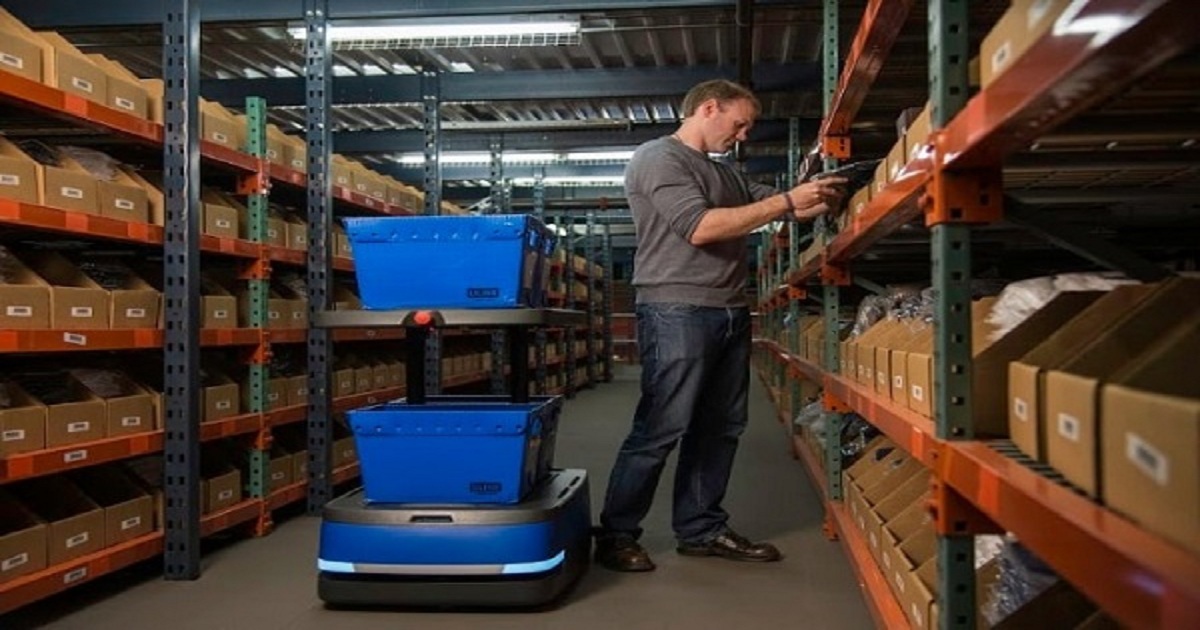
Warehousing and Distribution
Article | July 11, 2023
Purchasing software and supply chain management software are often mistaken for one another, but both have distinct functionalities. While purchasing software automates the procurement process, supply chain management software executes logistical transactions and manages supplier relationships. This report identifies the similarities and differences between the two software categories to help you understand which one is better suited to your needs.
What is purchasing software?
Purchasing software is an online tool that allows businesses to automate the process of procuring goods and services. It includes security compliance and reporting features.
Purchasing solutions offer integrated tools for invoice approval, inventory control, asset management, customer service, and work order management. They help manage contracts, analyze spending, track sales deliveries, and monitor inventory levels. They also assist in identifying bottlenecks in the purchase process, such as functions that have high expenditure.
Purchasing software offers invoice processing capabilities as well. Procurement professionals and accounting teams can use the tool to generate invoices, track invoice status, and monitor expenses via detailed reports.
What is supply chain management software?
Supply chain management software is a software platform that allows supply chain managers to automate the entire supply chain process—from acquiring raw materials to delivering the finished goods to consumers. The software provides tools for monitoring stock levels, including raw materials, and predicting future requirements based on the current inflow and outflow of inventory.
Supply chain management tools manage material handling, order fulfillment, and information tracking for stakeholders such as manufacturers, suppliers, and transport and logistics providers. They also track the returns of damaged goods, process refunds and insurance claims, and provide planning and forecasting tools for supply chain professionals.
What do they have in common?
Purchasing is a crucial component of supply chain management. Together, these processes significantly contribute to an organization’s procurement cycle. Despite the functionality differences, both the software categories have a few features in common, including supplier management, order management, and forecasting.
Which tool is right for you?
The answer to this question depends on your use case. If you’re looking for a tool that majorly focuses on acquiring supplies, opt for a purchasing software solution, as it will help you streamline the procurement cycle, maintain purchase order accuracy, and monitor supplier activities. However, if you wish to manage your entire supply chain operations, including supplier, transportation, warehouse, and inventory management, then investing in a supply chain software solution would be the right choice.
Read More

Warehousing and Distribution
Article | July 17, 2023
Order picking is the most resource-intensive operation of a warehouse or fulfillment center. More than 55% of the operating cost for a warehouse is related to order picking, and fulfillment centers, the number stands at 50%. It is the process that can bring in the most cost savings with an effective, streamlined and efficient order picking system. One of the most important components of your order picking system is the warehouse order picking cart. Order picking carts are used to move inventory from the warehouse shelves to sorting or packing stations. They make it easier for warehouse associates to carry multiple items at a time or to carry large, unwieldy items. When it is possible to carry multiple items on a trip, it drastically reduces the distance traveled by associates on foot. It also helps to reduce physical fatigue and improves efficiency dramatically.
Read More

Supply Chain
Article | August 17, 2023
Over the past decade, transportation and logistics have witnessed an immense transformation, from using automotive vehicles to drones and paper tags to advanced geotags. Also, the introduction of novel technologies and incorporation of innovative solutions such as artificial intelligence and blockchain has further reshaped the sector.
How is Rising Complexity Triggering the Adoption of Novel Technologies?
Today's supply chain is, in a word, complex. It has so many complexities, from ever-rising consumer expectations and disruptive events to globalized sourcing and omnichannel demand, that it is now being compared to a modern-day Gordian knot. With complexity comes ambiguity, particularly in the transportation and logistics industry.
For instance, importers are expected to find cost-effective and efficient ways to transport goods from manufacturing facilities, which are frequently located halfway around the world, to distribution centers and then, ultimately, into the hands of consumers. In addition, e-commerce has further added to the complexity by introducing new channels into the jumble along with the introduction of same-day or next-day delivery standards with higher transparency and tracking features by leading players such as eBay, Walmart, and Amazon Here are a few prominent technologies assisting logistics companies to counter these complexities.
Data Analytics
Big data analytics aids in the more accurate and efficient planning of operational processes, services, and strategies, allowing businesses to align with emerging consumer needs.
Artificial Intelligence (AI) and Machine Learning
AI and Machine Learning have become the most sought-after tech in the transportation food chain. It assists businesses in enhancing operational functionality, boosting productivity and speed, designing optimal transit networks and routes, and improving safety through predictive risk calculation and elimination.
The Internet of Things (IoT)
With the rising need for transparency and tracking of shipped goods, IoT is garnering immense popularity across the transportation and logistics sector. It enables businesses to monitor and track their goods in real-time with the help of geo-tagging, RFID tags, and GPS, resulting in fewer delays in deliveries.
Read More

Article | April 20, 2021
You might be wondering what the benefits are of benchmarking. Well, imagine you are training for a 100 metre sprint in your district. What would be the key number, or metric that you would need to know?
It would, of course, be what the winning time was when this race was last run in your district. Without that information, you don’t know what you’re trying to target. It would be impossible to know if you’ll have any chance at all of winning the race.
It’s exactly the same in business. If, for example, you are concerned about the pick rates in your warehouse, or your transport costs, or your inventory accuracy, benchmarking can help you because it can show you exactly where your performance is compared to others in your industry.
A few years ago, I was working with an automotive parts business. They had a little issue with their picking productivity in the warehouse. They wondered how good it was, whether they could improve it. They actually thought it was okay.
We looked at the figures and compared them with other businesses. This helped us realise that their picking productivity should be three times better than it was. And believe it or not, over a few months they did begin to improve their productivity.
Why? Because benchmarking opened their eyes to the fact that they were at a level quite far below others in the industry.
That’s the beauty of benchmarking. Until you know what others are doing, you can’t be sure how good your performance is.
If you’ve never tried benchmarking, there are three ways you could do it.
1. Informal Benchmarking
This exercise would involve you measuring particular functions or aspects of your business and comparing that against other parts of your business. Let’s say you have a warehouse operating in one city and another operating in another city. You might start to measure the same metrics and see which one is performing better.
You might know other people in the industry who are also operating warehouses so you might agree to share some data with them.
This is probably the easiest way to start off, but it has some downsides:
You’re only measuring against a very small sample size. If all of you in the pool are not that good, how would you know what good is?
You have to make sure that the businesses are similar and you are measuring things in exactly the same way. It’s very important in benchmarking to have a standard way of applying the metric.
2. Formal Benchmarking
This can work for much larger businesses. Perhaps you have operations in many different countries. You could agree a formal structure for how you are going to measure performance. You could do monthly or quarterly benchmarks with all the parts of your international organisation. You could learn from each other and share best practice.
This method is okay but you’re not getting access to a very large pool of results to measure yourself against. You will find that companies are very reluctant to give out benchmarking data. You might also be operating in an environment where the performance is quite low right across the business.
3. Hire a Professional Benchmarking Firm
This is the ultimate way to do it, although there are not a lot of professional benchmarking firms such as ours around. If you do manage to find one, you will quickly realise that there are significant benefits to be had by bringing in the professionals:
The metrics are put together in exactly the same way: When we do a benchmarking exercise for our consulting clients, we go through a very robust data-gathering process and then make sure all the costs, for example, are in the same buckets as everyone else’s in the database.
You gain access to a big pool of results: Professionals have measured hundreds, if not thousands, of companies. This enables you to say, ‘Our company is this size, it operates in this industry, these are the characteristics of our supply chain, who else in that pool of results is like us? We want to be measured against them.”
It’s no good measuring the performance of a grocery retailer, for example, against an industrial product supplier. They have different supply chains. You need to be measuring like with like.
Read More